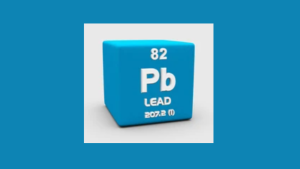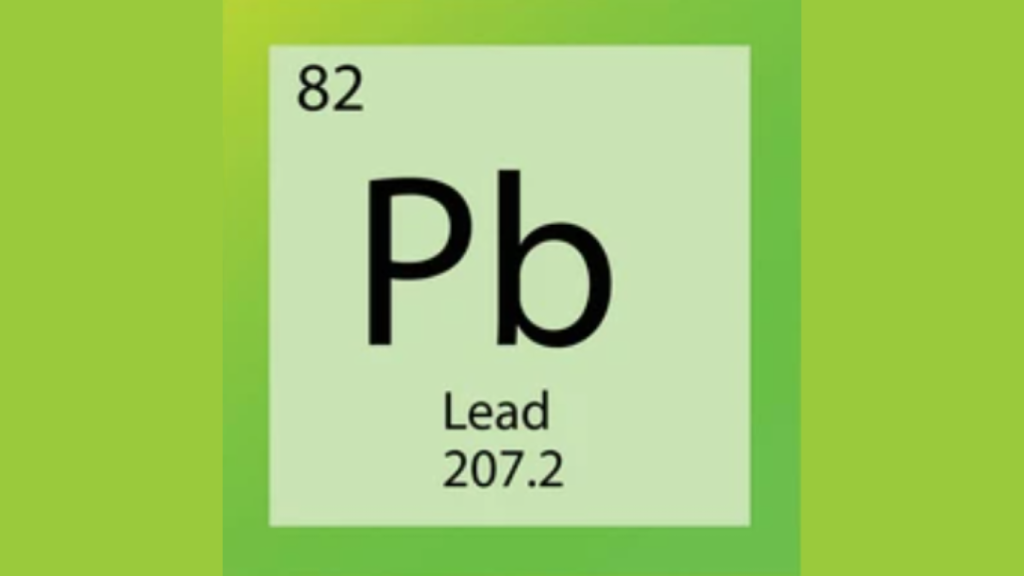The electron configuration for Pb is 1s² 2s² 2p⁶ 3s² 3p⁶ 4s² 3d¹⁰ 4p⁶ 5s² 4d¹⁰ 5p⁶ 6s² 4f¹⁴ 5d¹⁰ 6p². Lead has an atomic number of 82 and is represented by the chemical symbol “Pb.”
Lead is a soft, dense, malleable, bluish-grey metal. Ancient civilizations, such as the Romans, discovered and used lead. It is used in batteries, radiation shielding, and as a component in X-ray and gamma-ray detectors. Lead is also used in the construction industry for plumbing materials, roofing, and stained-glass windows.
However, lead is a toxic substance that can accumulate in the human body and cause serious health problems, especially among children. Efforts are being made to reduce or eliminate the use of lead in consumer products and to prevent lead poisoning.
Pb Electron Configuration Basics
Pb, which stands for lead, has an electron configuration of 1s²2s²2p⁶3s²3p⁶4s²3d¹⁰4p⁶5s²4d¹⁰5p⁶6s²4f¹⁴5d¹⁰6p². This means that it has a total of 82 electrons distributed over its orbitals.
Lead (Pb) is a chemical element with the atomic number 82, and it belongs to Group 14 in the periodic table. The electronic configuration of an element tells us the arrangement of electrons in its atomic orbitals. The electrons in an atom possess energy, which is distributed among different levels and sub-levels within the atom. Pb electron configuration provides essential information about the electron arrangements in the lead atom. Pb has an electron configuration of 1s2 2s2 2p6 3s2 3p6 3d10 4s2 4p6 4d10 5s2 5p6 4f14 5d10 6s2 6p2. This electron configuration is derived from the filling of the quantum level to minimum potential energy. Pb electron configuration can be divided into ground state and valence electron configurations. Let’s look at these configurations in detail.
Ground State Configuration
The ground state of an atom is the lowest energy state of an electron. The electron configuration of Pb in its ground state represents the arrangement of electrons in their lowest energy levels. Pb ground state electron configuration can be represented as 1s2 2s2 2p6 3s2 3p6 3d10 4s2 4p6 4d10 5s2 5p6 4f14 5d10 6s2 6p2. In this configuration, all the electron’s positions in the energy levels are filled based on the Aufbau Principle, which states that lower energy sub-levels need to be filled before higher energy sub-levels.
Valence Electron Configuration
The valence electrons are the electrons that are in the outermost shell of an atom. They are responsible for chemical bonding and essential for studying an element’s chemical properties. An element’s valence electron configuration is the electrons’ arrangement in its valence shell. Pb valence electron configuration can be represented as 6s2 6p2. Therefore, Lead has four valence electrons. Pb valence electron configuration can explain its properties, reactivity, and bonding in chemistry.
Notation Process
The electron configuration of elements can be represented using different notations. The most commonly used notation is the noble gas configuration notation. In the noble gas configuration, the electron configuration of an element is written in terms of a noble gas element with the same electron configuration as the previous noble gas element. Pb noble gas notation is as follows: [Pb] = 4f14 5d10 6s2 6p2. In this notation, the symbol [Pb] represents the electronic configuration of the noble gas xenon (Xe), which has the same electron configuration as Pb up to 5p6. The remaining electrons are written after the noble gas configuration. In conclusion, understanding the electron configuration of lead is essential for explaining its properties in chemistry. The ground state configuration, valence electron configuration, and notation process of Pb are crucial aspects of its electron configuration.
Why Is Electron Configuration Important For Pb
Electron configuration is a crucial concept in chemistry. It helps us understand how electrons are distributed in an atom’s energy levels. It is also important to understand the element’s chemical and physical properties, including its behavior during reactions. In this post, we will explore the electron configuration of Lead (Pb) and how it affects its properties.
Chemical Properties
Lead has an atomic number of 82, indicating it has 82 protons and electrons. The electron configuration of Pb is 1s2 2s2 2p6 3s2 3p6 3d10 4s2 4p6 4d10 5s2 5p6 4f14 5d10 6s2 6p2. This configuration shows that lead has four valence electrons in the 6p orbital. These electrons are involved in chemical reactions and are responsible for lead’s chemical properties, including its ability to form chemical bonds.
Lead has a high atomic weight, making it a dense and soft metal. Its chemical properties allow it to react with other elements It is also a moderately active metal, which means it can easily react with oxygen and water, leading to the formation of lead oxide and lead hydroxide, respectively. Additionally, the element is characteristically malleable and ductile, meaning it can be molded into different shapes without breaking.

Physical Properties
The electron configuration of Pb also influences its physical properties. With its high atomic weight, lead is a dense and heavy metal with a melting point of 327.5°C and a boiling point of 1740°C. The element is also a good conductor of electricity.
Lead is known for its brilliant luster and soft bluish-white color. Depending on its surrounding temperature and pressure, it can also change its state of matter from solid to liquid to gas.
Behavior During Reactions
The valence electrons in lead’s electron configuration are involved in reactions and determine their behavior in various chemical reactions. Due to the inert nature of its outermost electrons, lead is less reactive with many elements than other metals in the same group.
Lead can react with halogens to form ionic compounds such as lead(II) chloride (PbCl2), a white crystalline solid that is insoluble in water. It can also form complexes with other elements or ligands through coordination bonds.
In conclusion, electron configuration is central to an element’s properties and behavior during reactions. The electron configuration of lead (Pb) is responsible for its unique characteristics, including its chemical and physical properties and behavior during reactions.
Examples Of Pb’s Electron Configuration
Pb’s electron configuration is [Xe] 4f14 5d10 6s2 6p2. This means that lead has four valence electrons in its outermost shell, making it a heavy element with a high atomic number of 82.
Lead (Pb) is a chemical element with the atomic number 82, and it belongs to the carbon group in the periodic table. Understanding the electron configuration of Pb is important because it helps to understand its chemical properties. Pb’s electron configuration can be written using three types of notations depending on the level of detail required. These notations differ by their presentation of valence electrons, inner-shell electrons, and their distribution in orbitals. Here are examples of Pb’s electron configuration using different notations.
Excited State Configuration
An excited state electron configuration shows the arrangement of electrons in an atom when one or more electrons are excited temporarily to a higher energy level. Pb’s excited-state electron configuration can be presented as:
| Energy Level | Sublevel | No. of Electrons |
|---|---|---|
| 1 | 1s | 2 |
| 2 | 2s | 2 |
| 2 | 2p | 3 |
| 1 | ||
| 3 | 3s | 2 |
| 3 | 3p | 6 |
| 1 | ||
| 4 | 4s | 2 |
| 4 | 3d | 10 |
| 2 | ||
| 5 | 4p | 2 |
Shortened Configuration
A shortened configuration takes the previous noble gas as the starting point and indicates only the valence electrons. Pb’s electron configuration can be written using the noble gas Xe as a starting point. Pb:214102
Noble Gas Configuration
A noble gas configuration takes the previous noble gas as the starting point and indicates all occupied subshells using the noble gas shorthand notation. Pb’s electron configuration can be written using the noble gas Xe as a starting point. Pb:141022 In conclusion, understanding Pb’s electron configuration using different notations can aid in understanding its chemical properties and its behavior in chemical reactions.
Factors Affecting Pb’s Electron Configuration
Electron configuration is an essential topic for chemists as it helps to determine the behavior of elements in chemical reactions. The electron configuration for lead (Pb) is 1s2 2s2 2p6 3s2 3p6 3d10 4s2 4p6 4d10 5s2 5p6 4f14 5d10 6s2 6p2. However, various factors, such as electronegativity, atomic number, and orbital energy, can affect Pb’s electron configuration.
Electronegativity
As electronegativity increases, atoms tend to attract electrons more readily. It can affect Pb’s electron configuration by altering the distribution of electrons in each orbital. Generally, when an atom becomes more electronegative, its electron configuration becomes more stable.
Atomic Number
The electron configuration for an element depends on the number of electrons and protons in the nucleus. Increasing the atomic number will increase the number of electrons, and consequently, electrons will occupy higher energy orbitals. For Pb, the atomic number is 82, and the number of electrons is 82. Hence, the electrons occupy 6 shells, and the electron configuration is what we previously showed.
Orbital Energy
Orbital energy refers to the potential energy of an electron in a particular orbital around the nucleus. Electrons occupy orbitals with the lowest energy first, and higher-energy orbitals remain empty until lower-energy orbitals are filled. In general, the closer the electron is to the nucleus, the lower its energy. However, the presence of other electrons can affect the energy level of an electron. For instance, Pb’s electrons in the 5d, 6s, and 6p orbitals have slightly different energies due to their various interactions with other electrons in the atom. Google maps
Frequently Asked Questions On Electron Configuration For Pb
How Do You Write The Electron Configuration For Pb?
The electron configuration of Pb, which stands for lead, is [Xe] 4f14 5d10 6s2 6p2. This means that lead has a total of 82 electrons divided among its orbitals. The “Xe” represents the electron configuration of xenon, which serves as a shortcut for writing the configuration of the inner shells of electrons that are not involved in chemical bonding.
What Is The Electrons Of Pb?
Pb (lead) has 82 electrons in total.
What Is The Element With An Electron Configuration Of 1s22s22p4?
The element with an electron configuration of 1s22s22p4 is oxygen (O).
What Is The Electronic Configuration Of Pt?
The electronic configuration of PT is [Xe] 4f14 5d9 6s1 or 1s2 2s2 2p6 3s2 3p6 3d10 4s2 4p6 4d10 5s2 5p6 5d9 6s1.
Conclusion
Understanding electron configuration is crucial in studying the chemical properties of elements. We have explored the electron configuration for lead (Pb), a soft, dense, and highly malleable metal. By knowing its configuration, we can predict its reactivity in chemical reactions and its behavior in various environments.
The ground state configuration of Pb is [Xe] 4f14 5d10 6s2 6p2. Overall, mastering the electron configuration of different elements is highly useful for both academic and practical applications in the field of chemistry.
